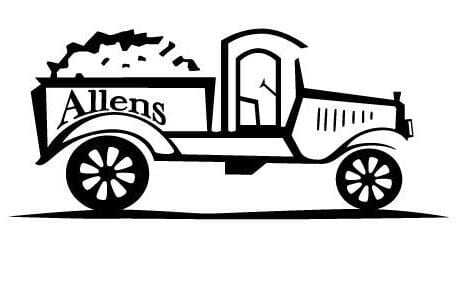A A & Bob Allen, Inc. Allen's Valley Loam
A A & BOB ALLEN, INC. LANDSCAPING BLOG
How to Keep Your Rock and Gravel Landscape Looking Great
by dirtman@allensonline.com (Admin), Friday, October 27, 2017 1:18 AM
How to Keep Your Rock and Gravel Landscape Looking Great

If you live in California, you have probably noticed the trend of converting a sod landscape to a more drought tolerant hardscape. You can reduce a huge amount of your water usage simply by replacing a portion of your grass and other water-hungry flora with gravel, rocks or mulch accented by drought-tolerant plants. Additionally, a landscape consisting of rock or gravel:
- Is simple and easy to install, and can be used as walkways, patios, paths and driveways.
- Helps prevent weeds from sprouting as long as a weed barrier is installed below.
- Encourages drainage into the soil below and prevents erosion during hard California rains.
- Is unpleasant for rodents and other digging creatures, and helps deter them from the base of your home.
Once installed, your hardscape only requires a little maintenance throughout the year. Take a look at what you need to know to keep your gravel and rock yard looking great.
Removing Debris
The biggest obstacle to keeping your hardscape of colored gravel and rock is the accumulation of debris. This can be as simple as a few windblown leaves, to a collection of everything the last windstorm left behind in your yard. A gravel and rock landscape looks best when it is pristine and free from leaves, twigs and other stray items.
There are several methods to remove leaves and other debris.
- Raking: Use a leaf rake to remove heavy drifts of leaves from your gravel just as you would from a lawn. It's best to rake the leaves when they are dry and light instead of wet clumps that attach themselves more easily to rocks.
- Leaf Blower: If the rocks in your landscape are larger, a leaf blower will work better than raking. Just make sure you wear goggles and are aware of where you're aiming.
- By Hand: If your area is smaller, you might want to remove debris by hand. This is necessary if you have plants or other structures that catch leaves easily and require extra attention.
A weekly inspection of your hardscape's surface is sufficient to keep it clean and clear of leaves, twigs and stray bits of garbage.
Weeding
Allowing weeds to remain not only makes your yard look scraggly, but weeds can uproot gravel or rocks, which can create tripping hazards. Weeds can also spread if you allow them to go to seed before pulling them. If you used a weed barrier under your gravel, weeds should be a minimal problem and it's only a matter of pulling an occasional weed as soon as it rears its head.
If you decided to omit the weed barrier in order to increase your yard's water absorption and ease of installing additional plants, then weeds are going to show up more regularly. Keep on top of weeds by pulling them when you perform your weekly debris removal or right after a heavy rain when they are the easiest to pull.
Keep it Smooth
Over time and especially at the end of winter, a gravel yard can develop dips which allow water and debris to accumulate. Instead of immediately adding more gravel to even the surface out, take the time to investigate beneath the gravel to find out what's causing the dip.
Washed-out sand or base gravel will continue to erode unless you repair the problem. It might be a simple matter of adding a few shovelfuls of sand to the low area first, then adding more gravel on top.
To keep your gravel smooth and attractive, nothing is more soothing and Zen-like than using a metal rake to create patterns in your gravel. Whether you use straight lines or a series of waves, every yard looks fantastic after it's freshly raked into designs.
For help choosing the best rock, gravel or mulch for your drought-tolerant yard, contact
the landscape experts at AA & Bob Allen Inc. for additional ideas and advice.
CONTACT INFORMATION
 2904 Beyer Lane, Stockton, CA 95215
2904 Beyer Lane, Stockton, CA 95215 Hours of Operation
Hours of Operation| Mon-Fri | 7:00 AM - 4:30 PM |
| Sat | 7:00 AM - 4:00 PM |
Sundays Beginning April 7 Sundays 9:00 AM - 2:00 PM
OUR LOCATION
BROWSE OUR WEBSITE
CONTACT INFORMATION
 2904 Beyer Lane, Stockton, CA 95215
2904 Beyer Lane, Stockton, CA 95215 Hours of Operation
Hours of OperationMon-Fri 7:00 AM - 4:30 pm
Sat 7:00 AM - 4:00 pm
Sundays Closed
(Winter Hours run from Dec. 1st through March 30th)
OUR LOCATION
Content, including images, displayed on this website is protected by copyright laws. Downloading, republication, retransmission or reproduction of content on this website is strictly prohibited. Terms of Use
| Privacy Policy


